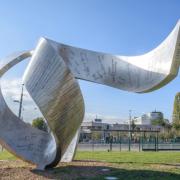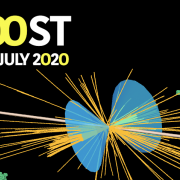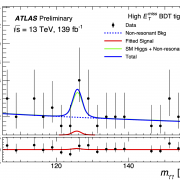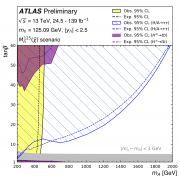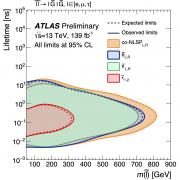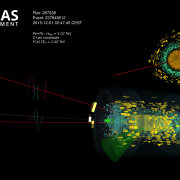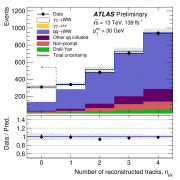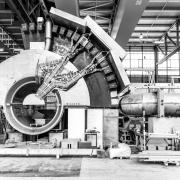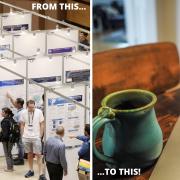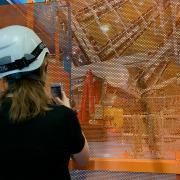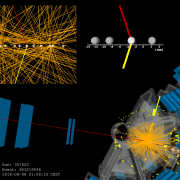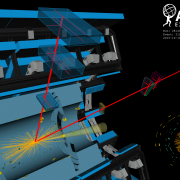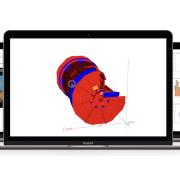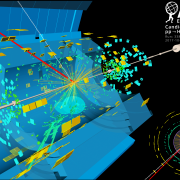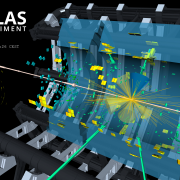Access to Collaboration Site and Physics Results
Updates tagged: “Higgs group”
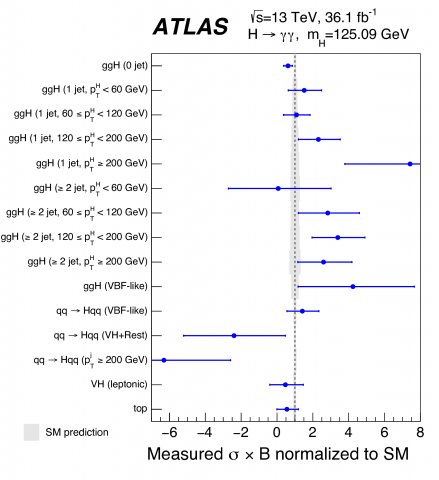
ATLAS illuminates the Higgs boson at 13 TeV
The ATLAS collaboration has released a set of comprehensive results that illuminate the properties of the Higgs boson with improved precision, using its decay into two photons with LHC collisions recorded at a centre-of-mass energy of 13 TeV.
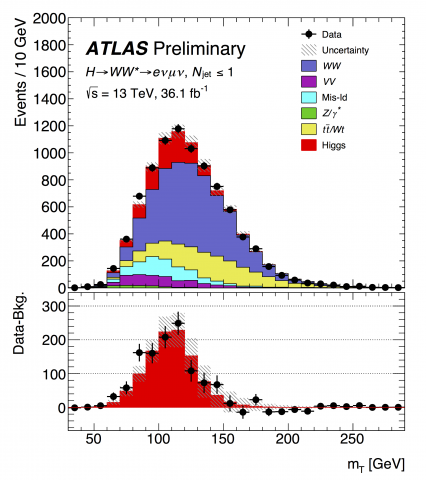
The exploration of the Higgs boson continues
Discovering the Higgs boson can be likened to finding a new continent. While a momentous event in itself, the most exciting part remains the exploration of the new land! In a new result presented today at the Rencontres de Moriond, the ATLAS collaboration examined the Higgs boson decaying into two W bosons
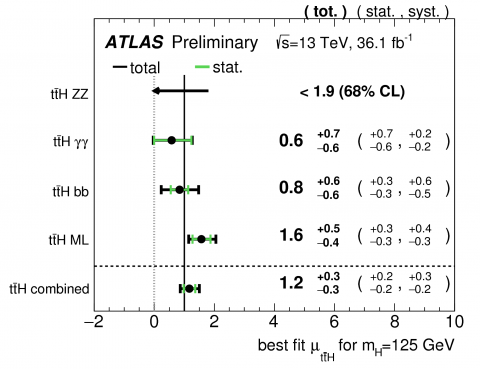
ATLAS finds evidence of the Higgs boson produced in association with a pair of top quarks
The ATLAS collaboration has presented evidence of “ttH production”, a rare process where a pair of top quarks emits a Higgs boson. Observing this process would provide new insight into the Higgs mechanism and allow for new studies of how unknown physics might (or might not) change the behaviour of this fundamental particle.
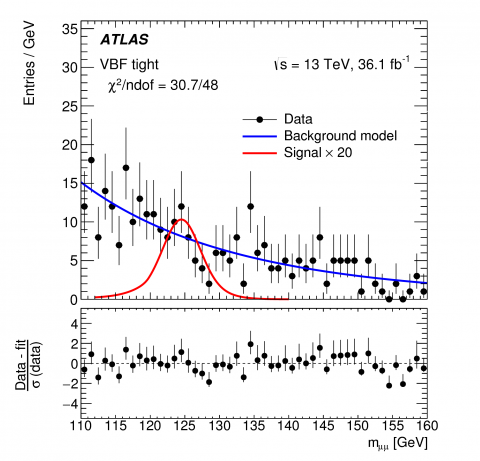
Exploring rare decays of the Higgs boson
Since discovering a Higgs boson in 2012, the ATLAS and CMS collaborations have been trying to understand whether this new particle is the Higgs boson as predicted by the Standard Model, or a Higgs boson from a more exotic model containing new, as yet undiscovered, particles. The answer lies in the properties of the Higgs boson.
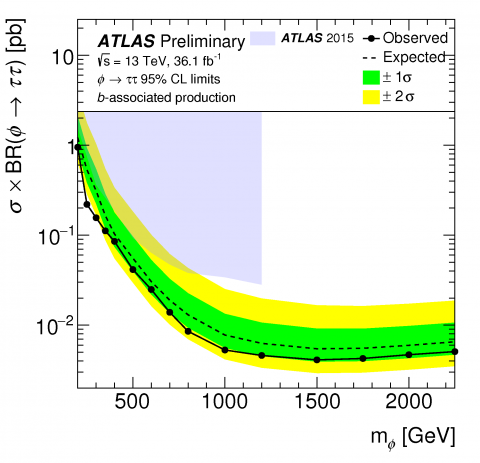
Why should there be only one? Searching for additional Higgs Bosons beyond the Standard Model
Since the discovery of the elusive Higgs boson in 2012, researchers have been looking beyond the Standard Model to answer many outstanding questions. An attractive extension to the Standard Model is Supersymmetry (SUSY), which introduces a plethora of new particles, some of which may be candidates for Dark Matter.
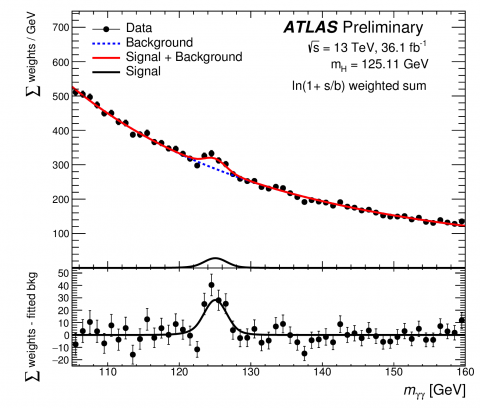
New ATLAS measurement of the Higgs Boson mass
The ATLAS collaboration has released a new preliminary measurement of the Higgs boson mass using 2015 and 2016 LHC data. The number of recorded Higgs boson events has more than tripled since the first measurement of the Higgs boson was released, using 2011/2012 data. An improved precision in the measurement of the Higgs boson mass has been made possible by both the increased collision energy of 13 TeV and improved collision rate.
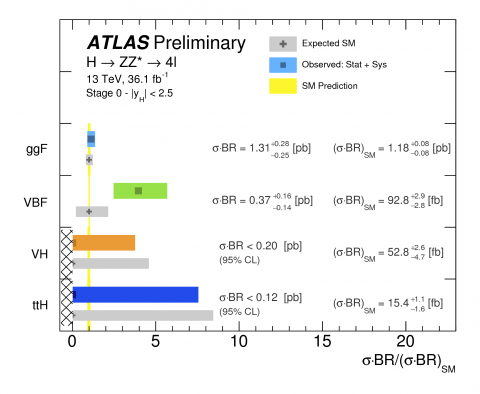
ATLAS takes a closer look at the Higgs boson’s couplings to other bosons
Since resuming operation for Run 2, the LHC has been producing about 20,000 Higgs bosons per day in its 13 TeV proton–proton collisions. At the end of 2015, the data collected by the ATLAS and CMS collaborations were already enough to re-observe the Higgs boson at the new collision energy. Now, having recorded more than 36,000 trillion collisions between 2015 and 2016, ATLAS can perform ever more precise measurements of the properties of the Higgs boson
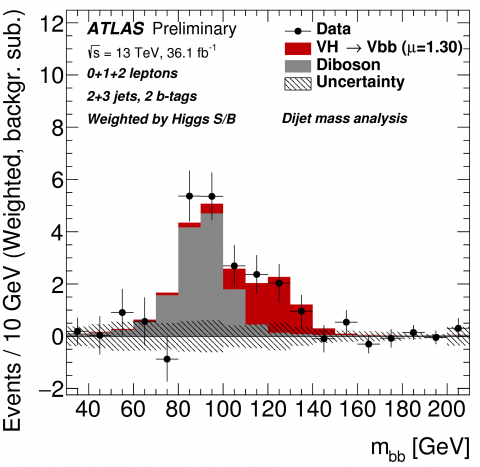
A first LHC sighting of the Higgs boson in its favourite decay
Until now, the Higgs boson had been observed decaying to photons, tau-leptons, and W and Z bosons. However, these impressive achievements represent only 30% of the Higgs boson decays! The Higgs boson’s favoured decay to a pair of b-quarks, which was predicted to happen around 58% of the time and thus drives the short lifetime of the Higgs boson, had so far remained elusive. Observing this decay would fill in one of the big missing pieces of our knowledge of the Higgs sector. It would confirm that the Higgs mechanism is responsible for the masses of quarks and might also provide hints of new physics beyond our current theories. All in all, it is a vital missing piece of the Higgs boson puzzle!
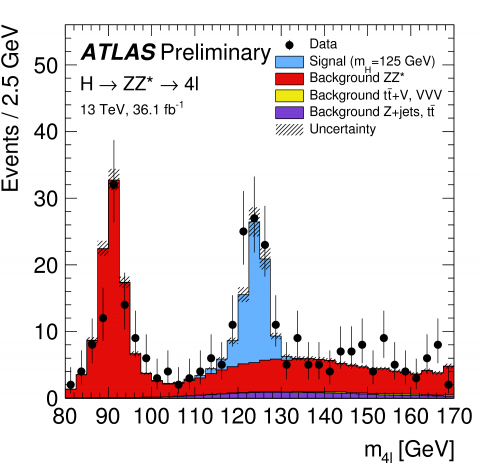
New ATLAS precision measurements of the Higgs Boson in the 'golden channel'
With the huge amount of proton–proton collisions delivered by the LHC in 2015 and 2016 at the increased collision energy of 13 TeV, ATLAS has entered a new era of Higgs boson property measurements. The new data allowed ATLAS to perform measurements of inclusive and differential cross sections using the “golden” H->ZZ*->4l decay.
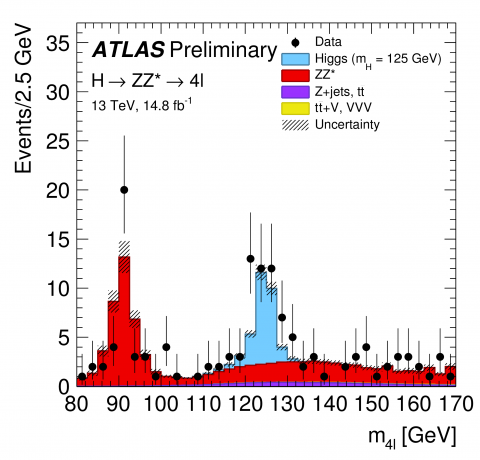
ATLAS observes the Higgs boson with Run 2 data
The LHC’s jump in energy to 13 TeV in Run 2, together with the copious amount of collisions delivered over the last 12 months, has allowed the ATLAS experiment to collect a data sample that is more than equivalent to the one collected during Run 1.


